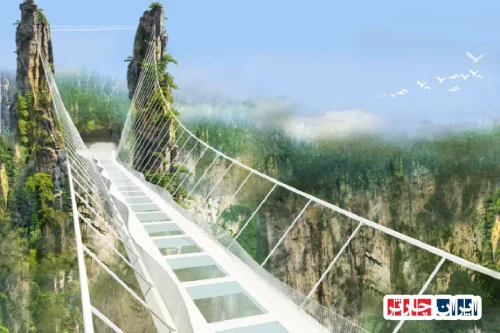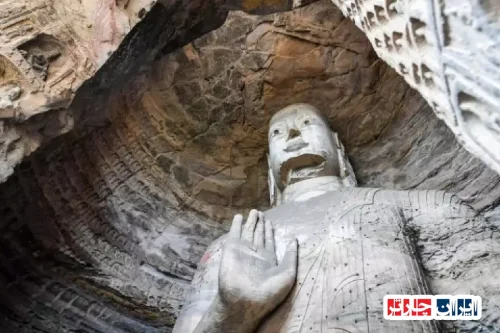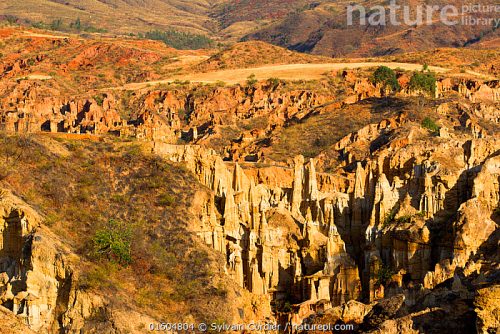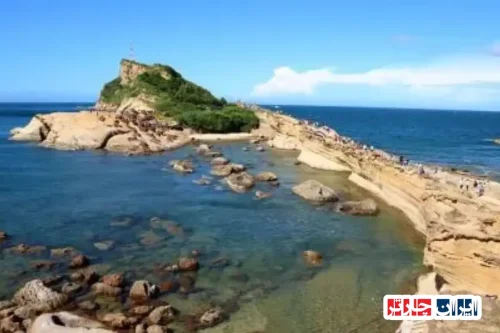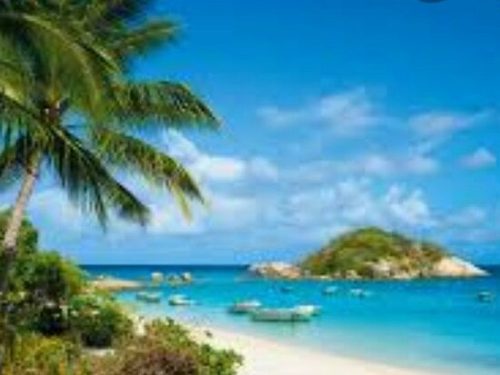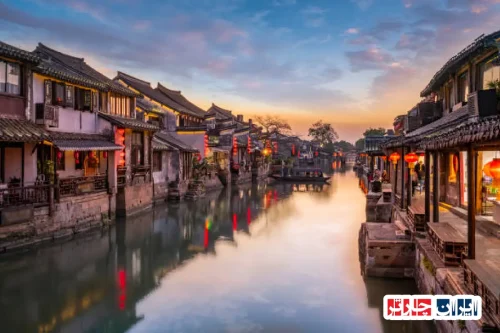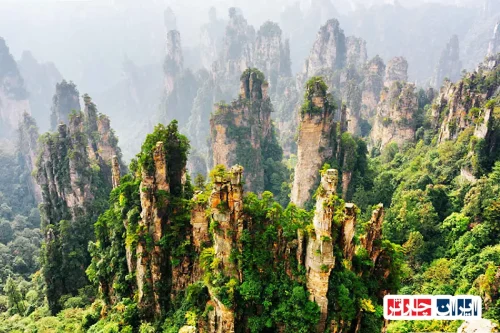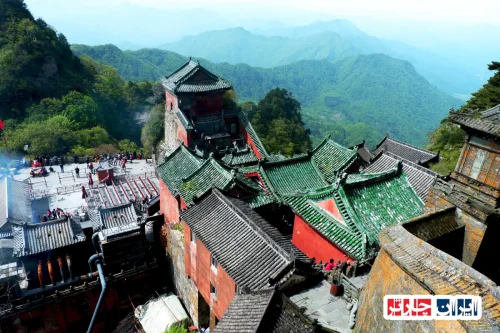Kyoto Golden Pavilion, Japan
Temples and historic sites are among the most important tourist attractions in Japan. The Kyoto Golden Pavilion is not only a symbol of traditional Japanese architectural art but also represents a cultural and spiritual experience. Over the years, thousands of tourists from around the world have traveled to admire the splendor and beauty of this structure and to learn about its rich history. Visiting provides an opportunity to ponder in nature’s tranquility and to enjoy the unique culture reflected by this site.
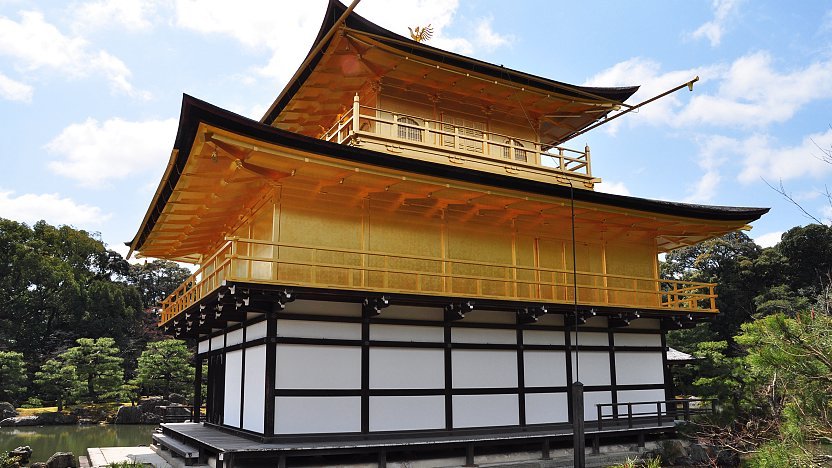 Kyoto Golden Pavilion, Japan
Kyoto Golden Pavilion, Japan
Temples and historic sites are among the most important tourist attractions in Japan. The Kyoto Golden Pavilion is not only a symbol of traditional Japanese architectural art but also represents a cultural and spiritual experience. Over the years, thousands of tourists from around the world have traveled to admire the splendor and beauty of this structure and to learn about its rich history. Visiting provides an opportunity to ponder in nature’s tranquility and to enjoy the unique culture reflected by this site.
Kyoto Golden Pavilion, Japan
Temples and historic sites are among the most important tourist attractions in Japan. The Kyoto Golden Pavilion is not only a symbol of traditional Japanese architectural art but also represents a cultural and spiritual experience. Over the years, thousands of tourists from around the world have traveled to admire the splendor and beauty of this structure and to learn about its rich history. Visiting provides an opportunity to ponder in nature’s tranquility and to enjoy the unique culture reflected by this site.
Geographic Location
– The Golden Pavilion is located in the Kitakama area of Kyoto, among the Kitayama mountains and near the flowing rivers. This region is famous for its lush greenery, verdant forests, and traditional Japanese gardens. – This area is also known for its temples and historical and cultural buildings, including the serene “Ryoan-ji Temple” known for its famous rock garden. – Also, around the Golden Pavilion, there are many art galleries, museums, and traditional shops that provide visitors with insights into Japanese culture and art.
Distance to the Center
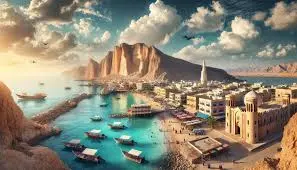
– The Golden Pavilion is approximately 5 kilometers northwest of Kyoto’s city center. – By using a bus or taxi, you can reach there in about 10 minutes from downtown. – Alternatively, you can travel via the “Kyokomi” train station to the Golden Pavilion, which takes around 20 minutes.
History
– The Golden Pavilion was built in the 14th century by Shogun Ashikaga Yoshimitsu as a retirement villa. – After Yoshimitsu’s death, this villa was transformed into a Zen Buddhist temple known as “Kinkaku-ji”. – Throughout history, this temple has been completely destroyed and rebuilt several times due to incidents like fires and wars.
Architecture
– The Golden Pavilion is renowned for its unique architecture, covered with gold leaf. – This temple has three floors, with the top two fully covered in gold leaf, beautifully reflecting in the Kyoko-chi pond. – The design of this temple combines various architectural styles including Edo, Samurai, and Zen Buddhism, providing a unique experience for visitors.
Green Spaces and Gardens
– The gardens surrounding the Golden Pavilion are recognized as one of its most attractive features. – These gardens, with their meticulous and traditional Japanese designs using stones, trees, and water features, offer a peaceful and beautiful space for visitors. – The Kyoko-chi pond that surrounds the pavilion presents a stunning view with its reflections of the temple.
Activities and Leisure
– Besides visiting the Golden Pavilion, visitors can enjoy the surrounding traditional gardens, including the famous rock garden of “Ryoan-ji”. – Additionally, around the pavilion, you can visit several other temples, historical monuments, and cultural buildings such as “Kiyomizu-Dera Temple” and “Toyoku-ji Temple”. – Other activities you can engage in this area include strolling through traditional gardens, participating in Buddhist ceremonies, and visiting local art galleries and museums.
Best Time to Visit
– Spring with cherry blossoms and autumn with warm-colored leaves are the best times of the year to visit the Golden Pavilion. – In winter, the snow-covered Golden Pavilion creates a scenic and tranquil view. – Summer, with its warm weather and bright light, offers a great opportunity for photography at the Golden Pavilion.
Travel Tips
– Before your trip to the Golden Pavilion, plan your visit and gather necessary information from the official website. – Bring comfortable and weather-appropriate clothing and be prepared for walking various paths. – Don’t forget your camera to capture beautiful moments and enjoy delicious local food and drinks.
Photography and Memory Making
– The Golden Pavilion is an exceptional place for photography. – The reflection of the golden temple in the “Kyoko-chi Pond” creates a stunning scene that appeals to both professional and amateur photographers. – The best times for photography are early morning or late afternoon for optimal lighting and beautiful shadows.
Costs and Prices
– Entrance to the Golden Pavilion is possible with a reasonable fee. – The entrance fee for adults is about 400 Yen, roughly equivalent to 4 US dollars. – This fee contributes to the maintenance and preservation of the temple and its surrounding gardens.
Visitors’ Reviews
– Many visitors are amazed by the beauty of the “Golden Pavilion” in Kyoto. – They appreciate the artistic combination of architecture, the surrounding nature, and the calm atmosphere. – Visitors from all over the world share positive reviews about their experience and regard it as one of Kyoto’s top attractions.
FAQ
- Where is Kinkaku-ji located in Kyoto?
- Kinkaku-ji is located at 1 Kinkakujicho, Kita, Kyoto, Kyoto Prefecture 603-8361, Japan.
- What is the entrance fee for Kinkaku-ji?
- The entrance fee for adults is 400 yen, approximately 4 USD.
- How much time is recommended for a visit to Kinkaku-ji?
- Usually, about an hour is recommended for a full visit, photography, and exploring the surrounding gardens.
- When is the best time to visit Kinkaku-ji in Kyoto?
- The best time to visit Kinkaku-ji is during spring and autumn when the gardens are blooming or changing color.
- How can one reach Kinkaku-ji in Kyoto?
- You can use the Kitano-Hakubaicho Station on the Karasuma Line and then walk about 2 miles (3.1 km). Google Maps is recommended for precise navigation.
- Can tickets to Kinkaku-ji be purchased online?
- Tickets are usually purchased on-site from the ticket office, and widespread pre-purchase systems are not available.
- What amenities are available around Kinkaku-ji?
- Beautiful gardens, walking paths, and great places for photography surround Kinkaku-ji.
- Is photography allowed at Kinkaku-ji?
- Yes, photography is allowed for visitors, and many tourists enjoy capturing the beauty of its golden architecture.
- How can the Kyoto Metro system be used to reach Kinkaku-ji?
- Board the Karasuma subway line at Kyoto station and get off at Kitano-Hakubaicho Station, then walk from the station.
- What is the experience of visiting Kinkaku-ji like?
- Visitors often enjoy the stunning beauty of the golden architecture and the tranquility of the surroundings, with plenty of photo opportunities.
- Why is Kinkaku-ji recognized as a UNESCO World Heritage Site?
- Kinkaku-ji is recognized as a UNESCO World Heritage Site because of its unique architecture and cultural and historical significance.
- How can one explore the area around Kinkaku-ji?
- After visiting the temple, you can walk around the surrounding gardens and enjoy the natural scenery and beautiful designs.
- Can children visit Kinkaku-ji?
- Yes, Kinkaku-ji is a family-friendly destination, and children can also enjoy its beauty and peaceful environment.
- Do foreign tourists face any difficulties visiting Kinkaku-ji?
- No, Kinkaku-ji is an international destination, and tourists from all over the world can easily visit.
- What tips should be considered when visiting Kinkaku-ji?
- It’s best to purchase tickets early, wear comfortable shoes, and choose a good time to visit to avoid large crowds.
- Is local guidance needed for visiting Kinkaku-ji?
- No, Kinkaku-ji is well-signposted and easily reachable using maps and navigation apps like Google Maps.
- Are there any amenities like restaurants or restrooms available at Kinkaku-ji?
- Yes, there are dining options and souvenir shops within the Kinkaku-ji area, as well as public restrooms.
- Is any special permit or visa required to visit Kinkaku-ji?
- A visa is required for entry into Japan, but visiting Kinkaku-ji as a public site does not require a special permit.
- What can one see or experience at Kinkaku-ji?
- Kinkaku-ji is famous for its golden architecture and surrounding gardens. You can also visit the main temple, explore the gardens, take photos, and participate in a Japanese tea ceremony.
- Are there accessibility options available for visitors with disabilities at Kinkaku-ji?
- Kinkaku-ji is somewhat accessible for disabled visitors, but it’s advisable to contact local authorities for detailed information on accessibility features.
- What should I pack for a visit to Kinkaku-ji?
- It’s good to bring comfortable shoes, a hat, water, and snacks. Sunscreen and a camera are also helpful.



